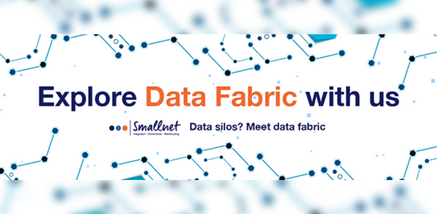Today, IBM is introducing an intelligent data fabric in the next generation of IBM Cloud Pak® for Data.
As companies look to harness their data to drive digital transformation, they’re faced with a sprawl of data across disparate data stores, locations, clouds and, in some cases, vendors. As a result, no meaningful value can be derived without integration, transformation and orchestration. In addition, as organizations seek to connect and deliver data from hybrid, multicloud and multi-vendor sources, they have to adhere to regulatory compliance and policy enforcement pertaining to their data, in some cases across multiple jurisdictions.
Previous attempts to connect and deliver data consisted of manually integrating open source and point solutions in an effort to build a data platform; however, managing multiple tools and solutions is complicated and cumbersome. But there is a better solution — an insight platform that provides one fully managed experience across hybrid cloud to ingest, explore, prepare, manage, govern and serve petabyte-scale data for business-ready artificial intelligence (AI).
Today, IBM is introducing an intelligent data fabric in the next generation of IBM Cloud Pak for Data . Data fabric is an emerging architecture that aims to address the data challenges arising out of a hybrid and multicloud data landscape. Through technologies like automation and the augmentation of integration, federated governance and activation of metadata, a data fabric architecture enables a dynamic and intelligent data orchestration across a distributed landscape, creating a network of instantly available information to power a business.
What is data fabric?
Forrester defines data fabric as “Orchestrating disparate data sources intelligently and securely in a self-service manner, leveraging data platforms such as data lakes, data warehouses, NoSQL, translytical and others to deliver a unified, trusted and comprehensive view of customer and business data across the enterprise to support applications and insights.” The data fabric enables enterprises to manage the burgeoning data volumes and complexity to deliver business-ready data for gleaning better insights and increased competitiveness. Gartner predicts that “By 2024, organizations that utilize active metadata to enrich and deliver a dynamic data fabric will reduce time to integrated data delivery by 50% and improve the productivity of data teams by 20%.”
There are several key benefits of a data fabric architecture :
Safeguarding the enterprise data: Data fabric embeds automated governance within the data platform. Enabled by active metadata, data fabric ensures automatic policy enforcement for all data access, providing a high level of data protection.
Enabling self-service consumption of trusted data: Business users have a single point of access to find, understand, shape and utilize data throughout the organization. The data fabric, therefore, extends the personas and roles within the organization that may access and use data. Data fabric liberates and democratizes data consumption.
Automating the integration of data and providing a single view: As previously mentioned, organizations that cobbled together a data platform from different point solutions had to manually integrate the data. Data fabric facilitates the automated integration, transformation and orchestration of data to support analytics, business and AI applications.
IBM Cloud Pak for Data
As stated in the announcement, the next generation of IBM Cloud Pak for Data can help clients build a data fabric across a hybrid cloud landscape. IBM Cloud Pak for Data is an insight platform that simplifies and automates data collection, organization and analysis. With IBM Cloud Pak for Data, organizations can deploy a data fabric to enable faster time-to-value for business users, higher productivity for data-driven operations and greater governance and compliance fidelity. IBM Cloud Pak for Data offers the most complete data fabric. Moreover, the modular and composable nature of the data fabric allows clients to deploy a data fabric that suites them. IBM’s data fabric is comprised of best-in-class capabilities in knowledge and governance, privacy and security, discovery and curation and integration and orchestration. The integration of these capabilities on the insight platform eliminates a client’s need to manage and maintain multiple complex solutions for their data management needs. As captured in a recent IBM IBV report , “Data fabric is important to understand because it provides new ways to manage the boundaries separating applications, data, clouds and the people who design and create them. It’s the management of those boundaries that determines success.”
IBM’s data fabric architecture helps your teams intelligently integrate enterprise data for timely insights and business decisions, improved customer experience, increased competitive advantage and faster innovation and growth.
To learn more about IBM’s perspective on data fabric, visit this page or read the white paper for more details on how you can get started.








